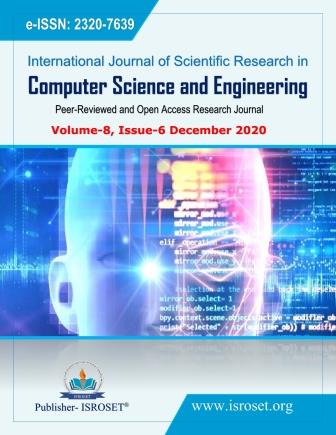Intelligent Surveillance System Using Deep Learning
Keywords:
CNN, LSTM, RNN, Inception, GoogLeNet, VGG, AlexNet, Data-Set, Deep Learning, TensorFlowAbstract
It`s of intensive importance to develop a way for automatic surveillance video analysis to acknowledge the presence of violence. During this work, to identify violent videos, we recommend a deep neural network. A convolutional neural network is used with a pre-trained inception model for extracting frame level features from a video. The characteristics of the frame level are then collectively employed during a long remembering variant that uses fully connected layers and leaky rectified linear units. Alongside the long remembering, the convolutional neural network is capable of capturing localized spatio-temporal features that alter the analysis of native motion within the video. The performance is more evaluated in terms of accuracy of recognition on standard benchmark datasets. The approach planned outperforms state-of -the-art strategies whereas process the videos in real time.
References
Ali Khaleghi and Mohammad Shahram Moin, “Improved Anomaly Detection in Surveillance Videos Based on a Deep Learning Method, “978-1-5386-5706-5/18 IEEE 2018.
Antreas Antoniou Plamen Angelov, “A General-Purpose Intelligent Surveillance System for Mobile Devices using Deep Learning, “International Joint Conference on Neural Networks (IJCNN) 2016.
Swathikiran Sudhakaran, Oswald Lanz,” Learning to Detect Violent Videos using Convolutional Long Short-Term Memory,” 978-1-5386-2939-0/1720 IEEE 2017 .
Fath U Min Ullah, Amin Ullah, Khan Muhammad, Ijaz Ul Haq and Sung Wook Baik, “Violence Detection Using Spatiotemporal Features with 3D Convolutional Neural Network, “Sensors, 19, 2472; doi:10.3390/s19112472 2019.
Prakhar Singh, Vinod Pankajakshan, “A Deep Learning Based Technique for Anomaly Detection in Surveillance Videos, “Twenty Fourth National Conference on Communications 2018.
S.M. Rojin Ammar Md. Tanvir Rounak Anjum Md. Touhidul Islam,“Using Deep Learning Algorithms to Detect Violent Activities”.
Lyu, Y., Yang, Y., “Violence detection algorithm based on local spatio-temporal features and optical flow,”. 2015 International Conference on Industrial Informatics-Computing Technology, Intelligent Technology, Industrial Information Integration (ICIICII), pp. 307–311. IEEE, December 2015
C. Piciarelli, C. Micheloni, and G. L. Foresti, “Trajectory-based anomalous event detection,” IEEE Transactions on Circuits and Systems for Video Technology, vol. 18, no. 11, pp. 1544–1554, Nov 2008.
V. Mahadevan, W. Li, V. Bhalodia, and N. Vasconcelos, “Anomaly detection in crowded scenes,” in 2010 IEEE Computer Society Conference on Computer Vision and Pattern Recognition, June 2010, pp. 1975–1981.
S. Hochreiter and J. Schmidhuber, “Long short-term memory”, Neural computation, vol. 9, no. 8, pp. 1735–1780, 1997.
P. Bilinski and F.Bremond. “Human violence recognition and detection in surveillance videos”. In AVSS, 2016.
D. Chen, H. Wactlar, M.-y. Chen, C. Gao, A. Bharucha, and A. Hauptmann. “Recognition of aggressive human behavior using binary local motion descriptors”. In International Conference of the IEEE Engineering in Medicine and Biology Society (EMBS), 2008.
Vishwajit D, A Ghavale, R Mahore, H Gautam, IRJET- “Review of Violence Detection System using Deep Learning” IRJET-V6I12326.
Downloads
Published
How to Cite
Issue
Section
License

This work is licensed under a Creative Commons Attribution 4.0 International License.
Authors contributing to this journal agree to publish their articles under the Creative Commons Attribution 4.0 International License, allowing third parties to share their work (copy, distribute, transmit) and to adapt it, under the condition that the authors are given credit and that in the event of reuse or distribution, the terms of this license are made clear.







